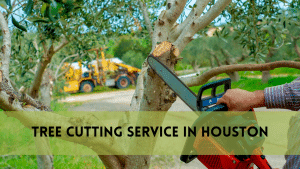If you live in a neighborhood with a Homeowners’ Association (HOA), you’re probably familiar with the rules and regulations that assist maintain the community’s beauty and property values. These standards frequently apply to landscaping, especially tree removal. So, do you need HOA consent to remove a tree on your property? In this post, we will look at the process of tree removal in a HOA community, the importance of getting consent, and what factors may affect the decision.
Understanding Homeowners’ Associations
Homeowners’ Associations are groups formed within residential communities to manage and enforce rules and regulations that ensure the neighborhood’s look and quality. These rules can apply to a variety of areas, such as architecture, landscaping, and property management. HOAs are often run by elected authorities and have bylaws that homeowners must follow.
An HOA’s major purpose is to establish a peaceful living environment in which all properties are well-maintained, property values are protected, and the visual attractiveness of the community is retained. To do this, HOAs establish criteria for homeowners to follow while making changes to their properties and maintaining them, including tree removal.
The Importance of Seeking HOA Approval to Remove a Tree
Obtaining HOA approval for tree removal is critical for various reasons:
Avoiding Penalties: Noncompliance with HOA requirements can result in fines and penalties. HOAs have the right to fine residents who breach community restrictions, particularly those pertaining to tree removal. These fines can build up and become a financial hardship.
Maintaining Community Aesthetics: HOAs are dedicated to keeping the community’s attractiveness. Trees and landscaping contribute significantly to the neighborhood’s overall aesthetic attractiveness. Unauthorized tree removal can result in landscape gaps and a less appealing community, which may damage property values for all residents.
Preventing Neighbour Disputes: Tree removal decisions can have an impact on neighbours, and HOA permission helps maintain harmony. Neighbours who are upset about the tree removal may escalate the matter without approval, resulting in arguments or conflicts within the community.
Do I Need HOA Approval to Remove a Tree?
In most cases, you need HOA (Homeowners’ Association) approval to remove a tree in your yard if you live in an HOA community. HOAs typically have rules and guidelines in place to maintain the community’s appearance and property values, and tree removal is often subject to their approval processtr
The HOA’s Role in Tree Removal
HOAs frequently have guidelines and procedures in place for tree removal inside their communities. These guidelines are intended to preserve the general attractiveness of the neighbourhood, safeguard green places, and minimize possible neighbour problems. While the specifics differ from HOA to HOA, tree removal usually necessitates approval or permits from the organization.
HOAs may have special criteria for tree removal, such as:
- submitting an application or request for review.
- Tree removal criteria.
- Tree removal terms and conditions.
- Provisions for replacing or mitigating trees.
The purpose of these rules is to ensure that tree removal is consistent with the HOA’s overall community vision. It also protects against rash or ill-considered tree removal, which can have a severe influence on the community.
Examining the HOA Guidelines
It is critical to check the HOA guidelines or bylaws to determine whether you need HOA consent to remove a tree. These documents will lay out the rules and processes for tree removal. Pay special attention to any portions that concern landscaping, tree preservation, or property modification. This will give you a good idea of the HOA’s stance on tree removal.
Many HOAs contain explicit wording regarding tree removal. These sections normally detail the permission process, the criteria under which tree removal is permitted, and any penalties for noncompliance.
The HOA Approval Process for Tree Removal
If the HOA guidelines say that tree removal requires approval, you must follow a certain procedure. This procedure may include the following steps:
a. Application Submission
You will normally need to submit an application to the HOA outlining the reasons for tree removal, the location of the tree, and any plans for replacement or mitigation. You may be required to include images, descriptions, and other pertinent materials in your application to support your case.
b. HOA review
The HOA will consider your application when it has been filed. In rare situations, the HOA may undertake an on-site examination to examine the tree’s condition and the impact of its removal on the community. During this evaluation, the HOA will determine whether your request adheres to their guidelines and community standards.
c. Approval or Rejection
After examining your application, the HOA will make a decision, either allowing or rejecting your request for tree removal. If permitted, you may be given criteria or recommendations for the removal, such as the need for tree replacement or the employment of particular contractors.
Approval Influencing Factors
Several variables can impact the HOA’s decision to remove a tree:
a. Tree Well-Being
If the tree is ill, dangerous, or dead, the HOA is more likely to accept its removal. Trees in poor health or with dead branches can be dangerous, causing injury or property damage. In such instances, the HOA’s main responsibility is the residents’ safety.
b. Effects on Neighbours
The potential impact on neighbours’ views, property prices, and general satisfaction may be evaluated. A tree that obstructs a neighbor’s view or causes issues with their property may result in complaints and arguments. In order to maintain a peaceful living environment, HOAs may evaluate how tree removal may effect neighbourly ties within the community.
c. Backup Plans
The HOA may ask you to replace the removed tree with a suitable species in order to maintain the community’s landscaping. This replacement tree should reflect the community’s desire for greenery and aesthetic appeal.
FAQS
1. Can I cut down a tree in a HOA neighborhood without getting permission?
No, in most circumstances, removing a tree in a HOA neighborhood requires prior consent. HOAs have regulations and guidelines in place to protect the look and property values of the neighborhood. Noncompliance may result in fines and penalties.
2. What happens if I cut down a tree without the HOA’s permission?
Unauthorized tree removal may result in fines and penalties levied by the HOA. To avoid these repercussions, it is critical to adhere to the specified protocols.
3. How long does the normal HOA clearance process for tree removal take?
The length of the HOA approval process can vary depending on the regulations of the organization. It may take several weeks to receive a ruling, so plan ahead of time and give enough of time for the review.
4. Can the HOA make me plant a replacement tree after one is removed?
Yes, many HOAs ask homeowners to plant a replacement tree in order to maintain the community’s landscaping and vegetation. Compliance with these rules is usually required before a tree can be removed.
5. Are there any exemptions for emergency tree removal?
In some situations, HOAs may make exceptions for emergency tree removal owing to safety issues. However, it is critical to tell the HOA as soon as possible and follow up with the necessary evidence.
Conclusion
In short, the necessity for HOA approval to remove a tree is determined by the specific rules and guidelines established by your Homeowners’ Association. It is critical to properly evaluate these rules, and if approval is required, to follow the stated process. Seeking approval guarantees that your actions are in line with the community’s standards and contributes to the beauty and integrity of your neighborhood.





